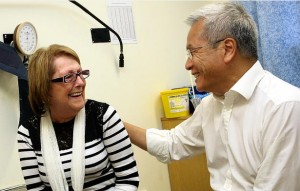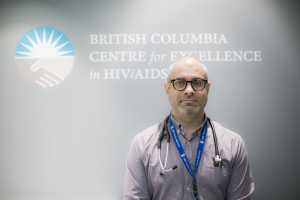Author Interviews, Heart Disease, JACC, Nutrition / 12.08.2015
Southern Diet May Raise Risk of Coronary Artery Disease
 MedicalResearch.com Interview with:
James M. Shikany, DrPH
Professor of Medicine
Division of Preventive Medicine
University of Alabama at Birmingham
Birmingham, AL
Medical Research: What is the background for this study? What are the main findings?
Dr. Shikany: There is a growing interest in the field of nutritional epidemiology in relating overall dietary practices to various disease endpoints. For example, the assessment of dietary patterns in a population may be more meaningful than concentrating on isolated nutrients or foods because they more closely reflect how people eat in the real world. Previously, we looked at how the degree to which one adhered to 5 dietary patterns identified in the Reasons for Geographic and Racial Differences in Stroke (REGARDS) study was associated with the risk of stroke. In the current study, we investigated how the degree to which one adhered to these dietary patterns was related to the risk of incident acute coronary heart disease.
The main finding was that a Southern dietary pattern (characterized by added fats, fried foods, eggs and egg dishes, organ meats, processed meats, and sugar-sweetened beverages) was associated with a significantly greater hazard of incident acute coronary heart disease in REGARDS participants. The association persisted following adjustment for sociodemographics, lifestyle factors, and energy intake. Specifically, following multivariable adjustment, participants in the highest quartile of consumption of the Southern pattern experienced a 56% greater hazard of incident coronary heart disease compared with those in the lowest quartile of consumption of this pattern. Another pattern we observed – the Plant-based pattern – characterized by vegetables, fruits, beans, yogurt, poultry, and fish was not associated with an increased risk of coronary heart disease.
(more…)
MedicalResearch.com Interview with:
James M. Shikany, DrPH
Professor of Medicine
Division of Preventive Medicine
University of Alabama at Birmingham
Birmingham, AL
Medical Research: What is the background for this study? What are the main findings?
Dr. Shikany: There is a growing interest in the field of nutritional epidemiology in relating overall dietary practices to various disease endpoints. For example, the assessment of dietary patterns in a population may be more meaningful than concentrating on isolated nutrients or foods because they more closely reflect how people eat in the real world. Previously, we looked at how the degree to which one adhered to 5 dietary patterns identified in the Reasons for Geographic and Racial Differences in Stroke (REGARDS) study was associated with the risk of stroke. In the current study, we investigated how the degree to which one adhered to these dietary patterns was related to the risk of incident acute coronary heart disease.
The main finding was that a Southern dietary pattern (characterized by added fats, fried foods, eggs and egg dishes, organ meats, processed meats, and sugar-sweetened beverages) was associated with a significantly greater hazard of incident acute coronary heart disease in REGARDS participants. The association persisted following adjustment for sociodemographics, lifestyle factors, and energy intake. Specifically, following multivariable adjustment, participants in the highest quartile of consumption of the Southern pattern experienced a 56% greater hazard of incident coronary heart disease compared with those in the lowest quartile of consumption of this pattern. Another pattern we observed – the Plant-based pattern – characterized by vegetables, fruits, beans, yogurt, poultry, and fish was not associated with an increased risk of coronary heart disease.
(more…)




















